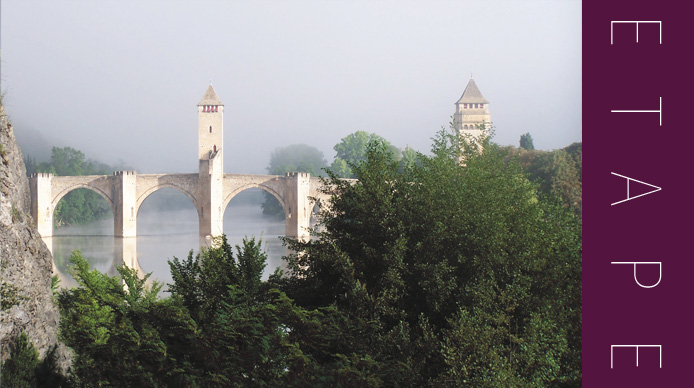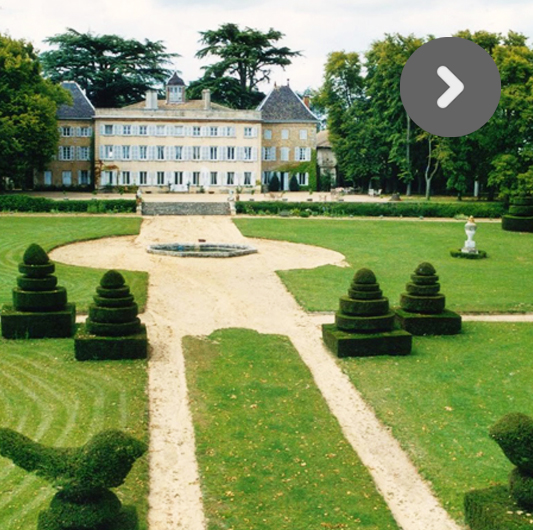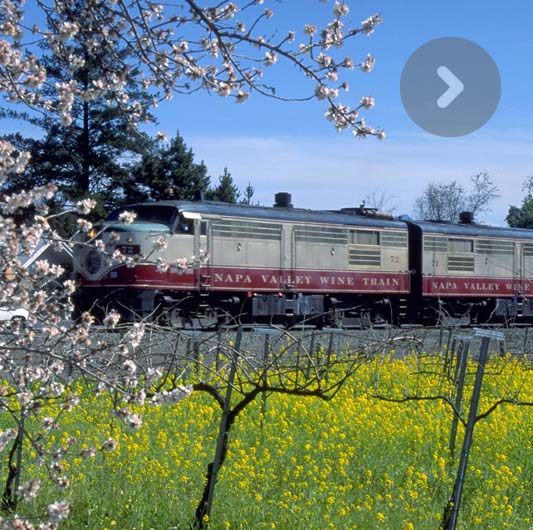
A grape variety that sets the benchmark.
The Cahors grape variety is one of the oldest in Europe. The Auxerrois or cot, referred to today as cahors malbec, was brought to the lot region some 2000 years ago with Julius Cesar’s roman conquests.
The wedding of Alienor of Aquitaine to Henri Plantagenêt, heir to the throne of England, in 1152, favoured the trade of wines, in particular those from Cahors, with the “upper regions”. The “black wine” as the English call it, becomes trendy in the thirteenth century. King Henri III takes it under his protection and has the casks sent down to Bordeaux on the Gironde River. Cahors wine reaches its peak in 1310 when it becomes the wine of the Grandees. King François Ier has a Cahors vine planted in Fontainebleau by the ancestors of the Jouves family. Peter the Great of Russia imposes it as the communion wine in the Orthodox Church. Even the Dutch develop a strong appreciation for this dark and flavoursome beverage, with notes of ripe fruit and liquorice.
A land of character
The vineyards are exposed to the sun and stretch from the first alluvial terrace of the Lot up to the causse, 200 metres above sea level. The stony ground on which the malbec vines grow enhance and enrich the character and authencity of the grape to produce wines that reflect the soil they are grown on; a deep, almost black, tannic, robust and silky juice, with profound aroma and a longer finish. Aromas of blackberry, Morello cherry, blackcurrant and prunes mixed with hints of liquorice, leather and truffle. You find the malbec grape variety in Argentina, in the Mendoza province, where it took roots in 1868 thanks to the French agronomer Michel Pouget.
Cahors wine was awarded the AOC – Appelation Origine Controllée – label in 1971, which is used as a point of reference today. The malbec grape variety, either on its own or blended with other grape varieties to a minimum of 70%, goes well with merlot or tannat. The white and the rosé, designated as “Vins de pays du Lot”, and cultivated on plots carrying 100% chardonnay grapes, remain a highly appreciated niche that includes the excellent “Albesco” from Haute Serre, the “Cèdre Blanc” and the “Charmeuse” from the Château Gaudou.
Water and wine
Water and Wine seem to mingle more than anywhere else. The vineyards stretch out across the left bank, and even more so over the right bank, to cover an area that is 60 km long and 30 km wide. The river undulates and meanders between cliffs, oak groves ripe with truffles, villages, manor houses and churches. From chestnut groves to coombs, stone walls and “pechs” (hills), a landscape filled with a thousand paths and a thousand nuances, with a certain soft melancholic feel to it, similar to the paintings by Henri Martin, a nineteenth century painter from Provence, who was fond of the Lot’s characteristic light.
In order to be able to take in the full splendour of the town, one should reach it by the emblematic Valentré bridge that has been bridging the Lot since the thirteenth century. The bridge, a UNESCO World Heritage site as part of the routes to Compostela, undergoes spectacular illuminations in July and August. Labelled a “City and country of Art and History”, Cahors, rich from its architecture and gastronomy, celebrates the good life. Everything to seduce you!
Cultural
The Saint Etienne Cathedral, with its stunning gothic cloister, the thirteenth century Saint Barthélemy Church, the Quival House, the Grenier du Chapitre, should all feature on your programme. You should also take a stroll through the Saint Georges quarter and down rue Victor Hugo, at the heart of the medieval town. The association “Les Mises en Bouche du Partrimoine” organises themed guided tours of the city, with commentary. For further information, please contact the Tourism Board. Make sure you take a walk through the thirty or so Secret Gardens, spread out across the old town, in which the forgotten plants of the Middle-Ages are showcased in a contemporary setting.
Museum Henri Martin
Situated in the old Episcopal Palace from the Concordat and built in the neoclassical style. Its curator, Laurent Guillaut, has turned it into a dynamic and constantly evolving cultural space, which attracts high level artistic events showcasing contemporary artists from the Lot region since 1845. Temporary exhibitions increase the standing of the galleries devoted to important archeological collections, fine arts and to the regional works of the painter Henri Martin, 792 rue Emile Zola, Cahors – France.
Tél.: +33 (0)5 65 20 88 66 www.mairie-cahors.fr/musee
![]()
Le Marché, to feast on delicious traditional dishes, 27 Place Jean-Jacques Chapou.
Tel.: +33 (0)5 65 35 27 27.
Cuisine Côté Sud, officially a delicatessen but the Blanco family who own it gladly serve up a few light regional dishes for lunch in their shop. 24 place Champollion. Tel.: +33 (0)5 65 53 15 16.
Le Balandre at the Terminus Hotel serve a classic menu made from local produce. 5 avenue Charles de Freycinet.
Tel.: +33 (0)5 65 53 32 00.
L’Ô à la Bouche, a very fine restaurant, owned by Jean François Dive. 56 allée Fénelon. Tel.: +33 (0)5 65 35 65 69.
Carré d’Art, a tea room that doubles up as a contemporary art gallery, combining the useful and the pleasant. 46 rue Pèlegry. Tel.: +33 (0)6 77 81 99 97.
The market, on the Place Chapou, is held every Wednesday and Saturday mornings. It’s the meeting place for many locals and they often get together in a convivial setting. There you will find the best local produce, including confits, goose and duck foie-gras, lamb from the Quercy, Rocamadour goats cheese and much more…
The Georges Vigouroux Atrium combines tasting, initiation and discovery of wines from each region, especially those of the South-West, the Cahors, Madiran, Gaillac and Buzet among others, in a great space, alongside a selection of carefully picked out and chic wine-related objects. A must-visit if you want to build up your personal wine cellar, route de Toulouse. Tel.: +33(0)5 65 20 80 80. www.g-vigouroux.fr










